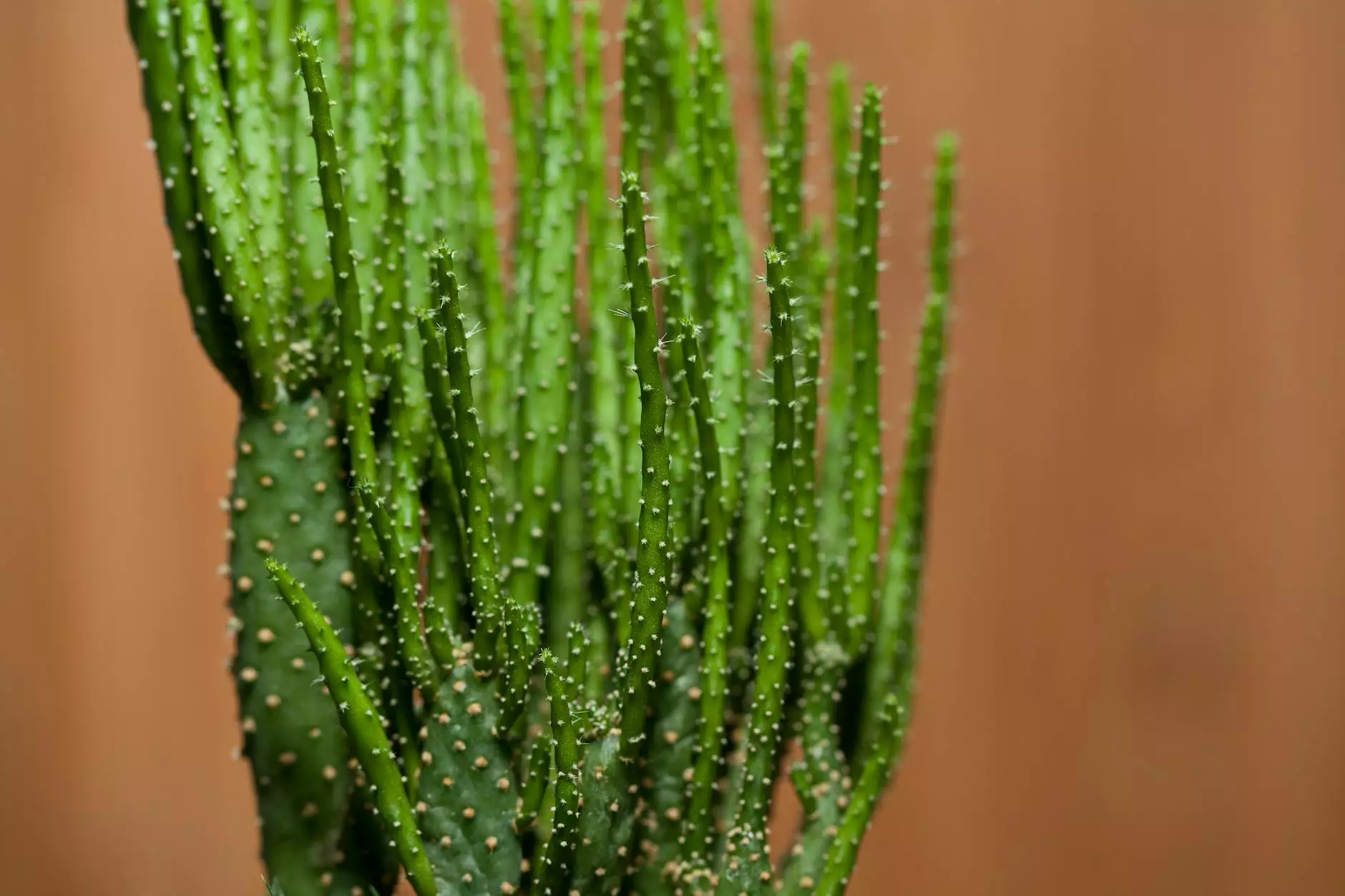Cactus Houseplant Care Tips

Welcome to La Venezia Art & Fashion's comprehensive guide on caring for cactus houseplants. Whether you're a seasoned succulent enthusiast or a beginner looking to add some desert charm to your indoor space, this article will provide you with all the necessary knowledge to successfully care for your cacti. From watering and lighting to soil and propagation, we've got you covered. Let's dive in!
Choosing the Right Cactus
When selecting a cactus for your home, it's essential to consider the specific species and its requirements. Different cacti have varying water, light, and temperature needs. Some popular cactus varieties for indoor cultivation include the Echinocactus grusonii (Golden Barrel Cactus), Opuntia microdasys (Bunny Ears Cactus), and Echinopsis pachanoi (San Pedro Cactus).
Watering Techniques
Proper watering is crucial for cactus health. Contrary to popular belief, cacti do require water, albeit in controlled amounts. Overwatering can lead to root rot, while inadequate water supply can cause dehydration and shriveling.
To determine when to water your cactus, check the soil's moisture level. Stick your finger about an inch into the soil - if it feels dry, it's time to water. Be mindful of seasonal changes, as cacti require less water during winter dormancy.
Remember to water thoroughly, allowing the excess water to drain out of the pot. Ensure the container has proper drainage holes to prevent waterlogging. It's also advisable to use a specialized cactus mix or create a well-draining potting mixture using materials like perlite, sand, and regular potting soil.
Optimal Lighting Conditions
Cacti thrive in bright, indirect sunlight. Place your cactus near a south or east-facing window, ensuring it receives at least six hours of sunlight daily. If natural light is limited, you can supplement it with artificial grow lights, preferably full-spectrum ones.
Be cautious of intense afternoon sun, as this can scorch the cacti. If your cactus starts turning reddish or yellowish, it's a sign of sunburn. Provide partial shade during the hottest part of the day or use a sheer curtain to diffuse the sunlight.
Soil and Potting
The right soil mixture plays a crucial role in cactus health. Cacti require well-draining soil that mimics their natural habitat. Opt for a mixture that contains sandy or gritty components to facilitate drainage.
When repotting a cactus, carefully remove it from the old container, gently shaking off excess soil. Inspect the roots for any signs of damage or rot, trimming them if necessary. Place the cactus in the new pot and fill the surrounding space with fresh cactus soil, ensuring proper anchorage. Avoid covering the cactus stem with soil, as this can lead to rotting.
Propagation Techniques
If you're looking to expand your cactus collection or share your love for cacti with others, propagation is an exciting technique. The most common methods of cactus propagation include stem cuttings, division, and seed planting.
Stem cuttings involve carefully removing a segment of the cactus stem, allowing it to callous for a few days, and then planting it in well-draining soil. Division refers to separating offsets or pups from the mother plant, ensuring each has its roots. Seed planting allows you to start cacti from scratch, although it requires more time and patience.
Final Thoughts
Caring for cactus houseplants can be a rewarding experience, adding both beauty and uniqueness to your indoor environment. By following the tips outlined in this guide, you'll be well-equipped to provide your cacti with the ideal conditions they require. Remember to tailor your care routine to your specific cactus species and always observe the signs your plants give you. La Venezia Art & Fashion hopes that this resource hub page has provided you with valuable information to nurture your cactus houseplants. Happy cactus gardening!









